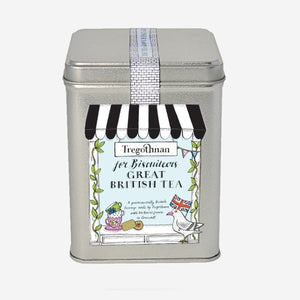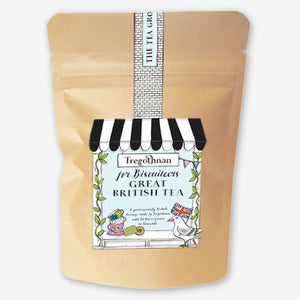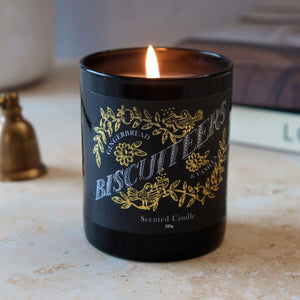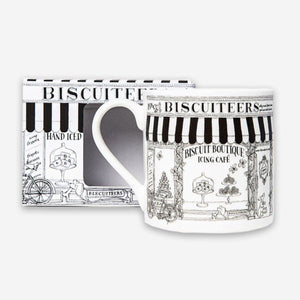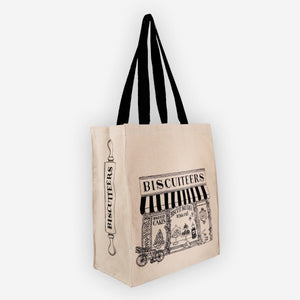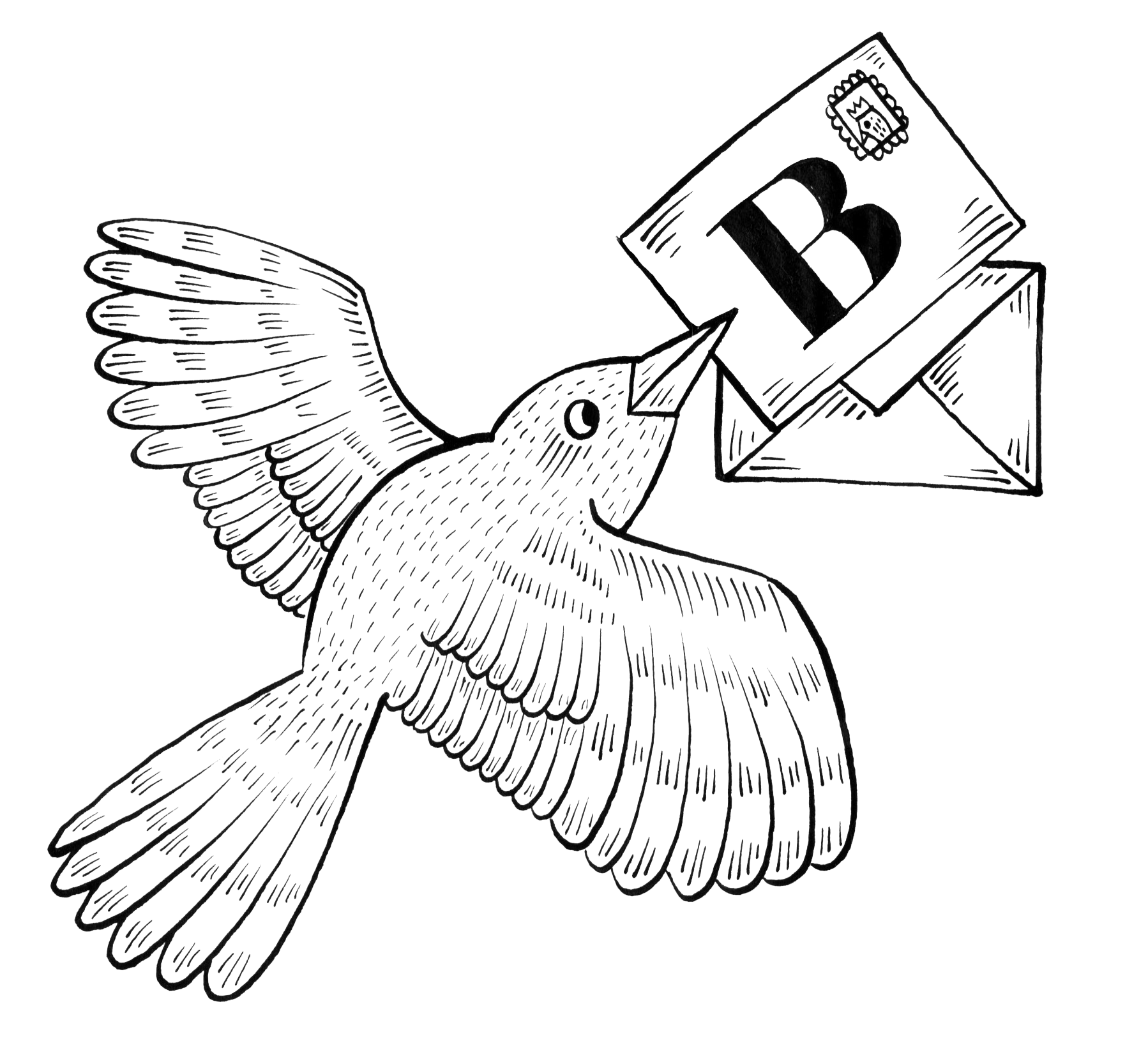:fill(white)/https://www.biscuiteers.com/static/cms/media/image-1-105-2.jpg)
Introducing our Father's Day DIY Cake, the ultimate showstopper for Dad! As we all know, Dad can be particularly difficult to buy for, so why not treat him this year to a homemade chocolate cake with extra special biscuits that are sure to win you lots of brownie points! Inspired by our brand new Dad's DIY Kit Biscuit Tin, we have designed this cake to look like an edible paint pot. Four layers of rich chocolate cake filled with smooth buttercream and topped with tool shaped biscuits, this delicious sponge cake is the perfect centre piece for any Father's Day celebration!
ingredients
- - For your four layer chocolate cake:
- - 260g caster sugar
- - 170g plain flour
- - 45g cocoa powder
- - 1 teaspoon baking powder
- - 1 teaspoon bicarbonate of soda
- - 1/2 teaspoon salt
- - 2 eggs – whisked
- - 130ml milk
- - 60ml vegetable oil
- - 1 teaspoon vanilla extract
- - 130ml boiling water
- - For your vanilla buttercream:
- - 250g unsalted butter, softened at room temperature
- - 500g icing sugar (sifted)
- - Milk
- - 1 tsp vanilla extract or essence
serves:12
difficulty:difficult
2 hours
What you will need:
2 x 6 inch cake pans
1 x 8 inch cake board
Jam (whatever flavour Dad loves best!)
1 kg fondant icing (shop bought)
Pallet knife
Smooth rolling pin
String and ruler
Yellow flood icing (follow our recipe here).
Black line icing (follow our recipe here).
Silver edible food paint
Food safe brush
Toolkit biscuits (you can buy our Dad's DIY kit biscuit tin here, or follow our guide to baking chocolate biscuits here, and icing biscuits here).
How to bake the cake:
Preheat your oven to 180ºC (fan oven) or gas mark 6.
Grease and line your two 6 inch cake pans.
In a large bowl, sift together your caster sugar, plain flour, cocoa powder, baking powder, bicarbonate of soda and salt.
Then slowly add your whisked eggs, milk, vegetable oil and vanilla extract and beat the mixture until all mixed in.
Now add your boiling water to the bowl and carefully whisk it in to the cake mixture - it will be runny, but don't worry!
Distribute the mixture evenly between your two cake pans.
Place your filled cake pans in the oven, on the middle shelf, side by side, and cook for 20-30 minutes, or until a skewer poked into the middle of the cake comes out clean.
Once the cakes are all baked, turn them out onto a wire rack and leave to cool.
Whilst your cakes are cooling, start making your buttercream...
How to make the vanilla buttercream:
Beat the softened butter with an electric mixer for 4-5 minutes until it’s fluffy with no lumps.
Slowly add the icing sugar a spoon at a time until well combined.
Add your vanilla.
Top tip:
If the buttercream appears too dry, add a splash of milk, about a teaspoon at a time until it reaches the desired consistency. If the mixture appears to wet and does not hold its shape, add more icing sugar, a spoon at a time until it reaches the right consistency.
:fill(white)/https://www.biscuiteers.com/static/cms/media/image-2-83.jpg)
How to decorate your cake:
Once the cake has cooled completely you can begin to stack the layers of your cake. Take a sharp knife and cut each of the cake layers in half horizontally so that you have four layers in total.
Take one of the layers and using a small spoonful of your plain vanilla buttercream, secure the bottom layer to your cake board.
Apply a layer of vanilla buttercream to the cake, and then a blob of jam in the middle and spread around.
Repeat this step until the cake has all four layers stacked.
Take a generous amount of your vanilla buttercream and smooth it around the edge of the cake, use a pallet knife to scrape off the excess until the cake is evenly covered in the buttercream.
Once your cake is stacked, covered and has been left to settle (we recommend leaving it for an hour before covering) it's time to cover your cake with fondant.
Firstly you will need to measure around the outside of your cake using a piece of string - you want to find out the cakes circumference so that you can cover the outside of the cake with fondant icing - wrap around the cake and cut to size. This string will act as a guide for when you are rolling out your fondant. Once measured, keep to one side. Also measure the height of your cake using a ruler.
Top tip:
In order to keep your fondant icing as smooth as possible, before you roll out your fondant remove all your jewellery, as any rings or bracelets could leave marks in your fondant!
Clear a large, smooth work surface – be sure that your surface is clean and free of any crumbs as any imperfections will be visible on your fondant.
Dust your service generously with icing sugar.
Top tip:
Before rolling out your fondant, make sure that it is at room temperature. This will make it much easier to work with.
Knead your fondant for 2 minutes or until it has softened.
Use your hands to roll your fondant into a ball, and then flatten it into a rough rectangle shape.
Lightly dust your rolling pin with icing sugar.
Roll out your fondant icing until it is about 1/4 inch thick. Try and roll it out evenly, into a large rectangle shape.
Use your ruler to measure the height of your fondant rectangle - you want it to measure the same as the height of your cake.
Take your piece of cut string and use it to measure the length of your fondant rectangle - you want it to measure the same as the circumference of your cake.
Using a sharp knife, carefully trim your rolled fondant to size.
Take your fondant rectangle, and wrap it around the sides of your cake.
Smooth the fondant on the side of your cake with your fondant smoother, smooth it from the bottom of the cake upwards to the top. Smoothing the fondant may stretch its height - any excess fondant bring up and over the edges of the top of the cake.
With any left over fondant, bring it together and roll with your hands into a ball. Flatten with your palm and roll with a dusted rolling pin into a circle with a diameter of 6 inches (the same as your cake). Using a sharp knife cut out the centre of your circle to leave a fondant ring of approx 1.5 cm.
Take the circle and lay it on the top of your cake so it creates the lip of the paint pot. Use a small amount of buttercream under the fondant ring to glue it to the top of the cake.
:fill(white)/https://www.biscuiteers.com/static/cms/media/image-3-82.jpg)
Take your clean food safe brush and dip it in your silver food paint, carefully paint the fondant ring that you have secured to the top of the cake. Depending on the paint you use, you may need to paint a couple of layers!
:fill(white)/https://www.biscuiteers.com/static/cms/media/image-4-72.jpg)
- Take your yellow flood icing in a squeezy bottle and using a back and forth motion flood the centre of the ring across the top of your cake (as above).
- Use your flood icing to add drips to the side of the cake to look like spilled paint.
:fill(white)/https://www.biscuiteers.com/static/cms/media/image-5-60.jpg)
- Place a very large paint brush biscuit (6 inches!!) on top of your cake. Take your yellow flood icing and add some extra drips coming off of the paint brush.
- Take your black line icing and pipe a message on to the side of the cake - we piped DAD, but you could write a more personal message, private joke or just 'Happy Father's Day'.
:fill(white)/https://www.biscuiteers.com/static/cms/media/image-6-39.jpg)
Finish off your cake with a selection of tool biscuits scattered around the bottom, and voilà!
Feeling inspired? Take a look at our full Father's Day collection. We've got a gorgeous collection of Father's Day gifts to help say thanks; thanks for getting rid of those spiders, thanks for being our personal taxi service, thanks for the DIY help...the list goes on!
